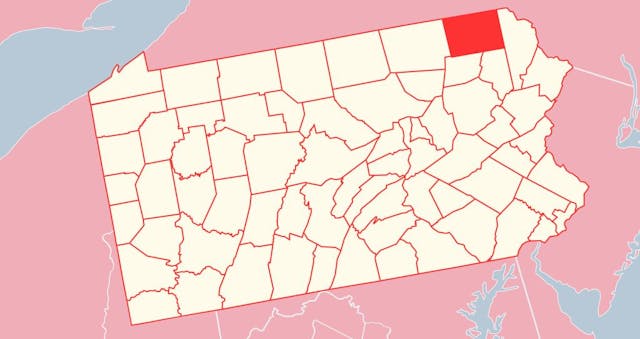Rehabs in Susquehanna
Susquehanna is a county in the state of Pennsylvania. It has an overall area of 832 square miles. It is quite populous with about 38,434 residents. Its history goes back to February 1810. The main seat is Montrose. Susquehanna is a perfect tourist destination with its beautiful nature and skiing resorts.
Education and healthcare are two developed fields, although there are still ongoing issues that demand constant attention, such as substance abuse which is becoming more and more concerning.
Statistics of Substance Abuse
Substance abuse is growing more and more getting near the peak at an unprecedented number. During and after COVID-19 the fatal overdose cases almost tripled ranging to a registered 294,000 cases. This makes Pennsylvania the third state for its substance abuse cases. For this reason, the local authorities try to fight the situation by supporting Susquehanna County rehabs. The institutions try to develop various programs and offerings, to make the services diverse and more affordable.
Susquehanna County Rehab Programs
Choosing a rehab program can be extremely difficult for a person both psychologically and because of the lack of knowledge. Few people are able to accept their addictions and intentionally choose a path of recovery.
Yet, when a person has made a fatal decision, the next important step is the choice of rehab and the program that would benefit the patient the most.
There are generally two options for treatment – Inpatient and outpatient. However, for a person who is unaware of the two offerings, their differences, and their peculiarities, making a choice is very hard.
Besides the two treatment types, there are also many other services that a patient should take into account either, like aftercare, detox, and other services.
Detox
Detoxification is the first procedure a person undergoes when looking for help. Healing is not effective if detox is missing or is not carried out properly. Detox is an extremely important procedure that demands professional handling. Otherwise, it can be dangerous or totally ineffective. After detox, the organism is clean of all the toxins and poisons, ready for the main treatment.
Inpatient and Outpatient Rehabs
Rehab programs are typically divided into two types - inpatient and outpatient. They are the main programs spread throughout the country, still, every center delivers slightly different services.
Inpatient and Outpatient rehabs are designed so that they can be beneficial for everyone with different addictions, from light to very serious ones.
Usually, people are not able to tell the difference between them and professional guidance is essential in choosing a treatment type. Based on the patient’s health situation, a specialist will choose the most beneficial option and determine the duration of the recovery process.
Inpatient care is for people with more severe addictions. This type of care is residential and patients are under constant supervision. Inpatient care can be pretty lengthy as it deals with serious cases that might have a long history. It takes a lot of time, concentration, and dedication from the patient.
Outpatient care is quite different. It supposes only a couple of hours of indulging every day and the good results are quicker to come. People undergoing it still go on with their everyday chores without much change in their lifestyle. The only thing is, that this type of support is suitable for milder manifestations. For more serious cases it is not effective.
Aftercare in Susquehanna County
All in all, the recovery process is a series of various services that come to supplement one another. For instance, if a patient has received notable aid, but refused to go on with aftercare, the process of recovery is still incomplete. Aftercare is like the last but very important touch. It includes different services, mostly psychological aid, counseling, different therapies, and other special offers that every rehab develops independently.
Addiction Treatment Costs
Costs are one of the obstacles that residents face when deciding to search for help. It is not a secret that they can be very high, making the process complicated.
Residential care is very costly, and insurance packages are not always helpful, as they might or might not cover the costs. In general, the pay goes all the way up to $20,000 monthly. And if the case is severe, it means it may last for months, thus doubling or tripling this sum.
Outpatient aid is not that costly, raging up to $5,000 per month, yet it also may be unaffordable for many.

